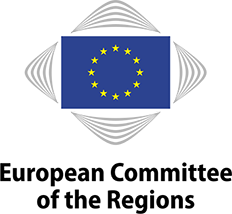
A small island in the middle of the Atlantic Ocean, a large community between the Pyrenees and the Mediterranean, and a picturesque region stretching from mighty mountains to farmland, what do they have in common?
These regions - the Azores in Portugal, Catalonia in Spain and Dalarna in Sweden - are three perfect examples of how innovation and cohesion can go hand in hand, thanks to the Regional Innovation Valleys (RIVs) initiative, one of the 25 actions of the New European Innovation Agenda (NEIA).
The burning challenges
Thanks to this programme, 149 regions have been selected to receive a RIVs label and have committed themselves to «tackling five key burning challenges», as Andras Inotai, Head of Unit - Innovation Policy and Access to Finance of European Commission, explained during the session “Regional Innovation Valley - What's in it for my region?”, which took place on 9th October as part of the EU Regions Week.
Inotai moderated with Catherine Wendt who is Head of Unit, European Commission for DG Regio. She said that “reducing the reliance on fossil fuels; increasing global food security; mastering digital transformation (including cybersecurity); achieving circularity; improving healthcare”.
The meeting highlighted the different ways in which Catalonia, the Azores and Dalarna have approached the programme in response to their personal challenges.
Deep tech for Dalarna
Eva Lundin, strategist for innovation and research in the Dalarna region, explained: «We are a transitional region, the only one in Sweden. So we have a moderate performance in the innovation index, but we are very dependent on traditional value chains, so we don't produce deep tech in our region. To get high tech, we need to connect our innovation ecosystem with other more advanced regions. And now, thanks to the EU programme, we think we can do that. We are ready to be a living laboratory for some of the most innovative solutions».
Biofertilizer for the Azores
Fàbio Vieria, Head of Unit of the Regional Directorate of Science, Innovation and Development of the Azores, expressed it bluntly: “We’re not innovators at all, but we're tempted to be, and we have two projects in the ground. One is on blue growth and the other on biofertilizers. Both of them combine synergies from several funds, including the RIV initiative. This is what we want, and the European Commission is opening up these new opportunities.”
Catalonia's personalised medicine
It may be difficult to describe each project. But that's not so bad, because the main point of the meeting was to show how big the impact of European funds can be. Even for a region as large as Catalonia.
Karim Hassan Hosny, a representative of the Catalan government, spoke of a truly new technology.
“There is a lot to do," he said . "There are many areas when it comes to personalised medicine. In other words, the idea is that by having a very specific and tailored health solution, we can reduce and optimise treatments. For example, if you have honey fever, instead of wading through different therapies a doctor could very quickly prescribe the perfect solution for you by mapping your health data. As you can imagine, personalised medicine is very complex and in some areas it's incredibly difficult to implement. The RIVs initiative was an opportunity to bring together not only the cluster reality, but also the policy makers and all the other layers of a value chain. Together, around the table, we are raising the level of innovation."
By Marta Belotti



